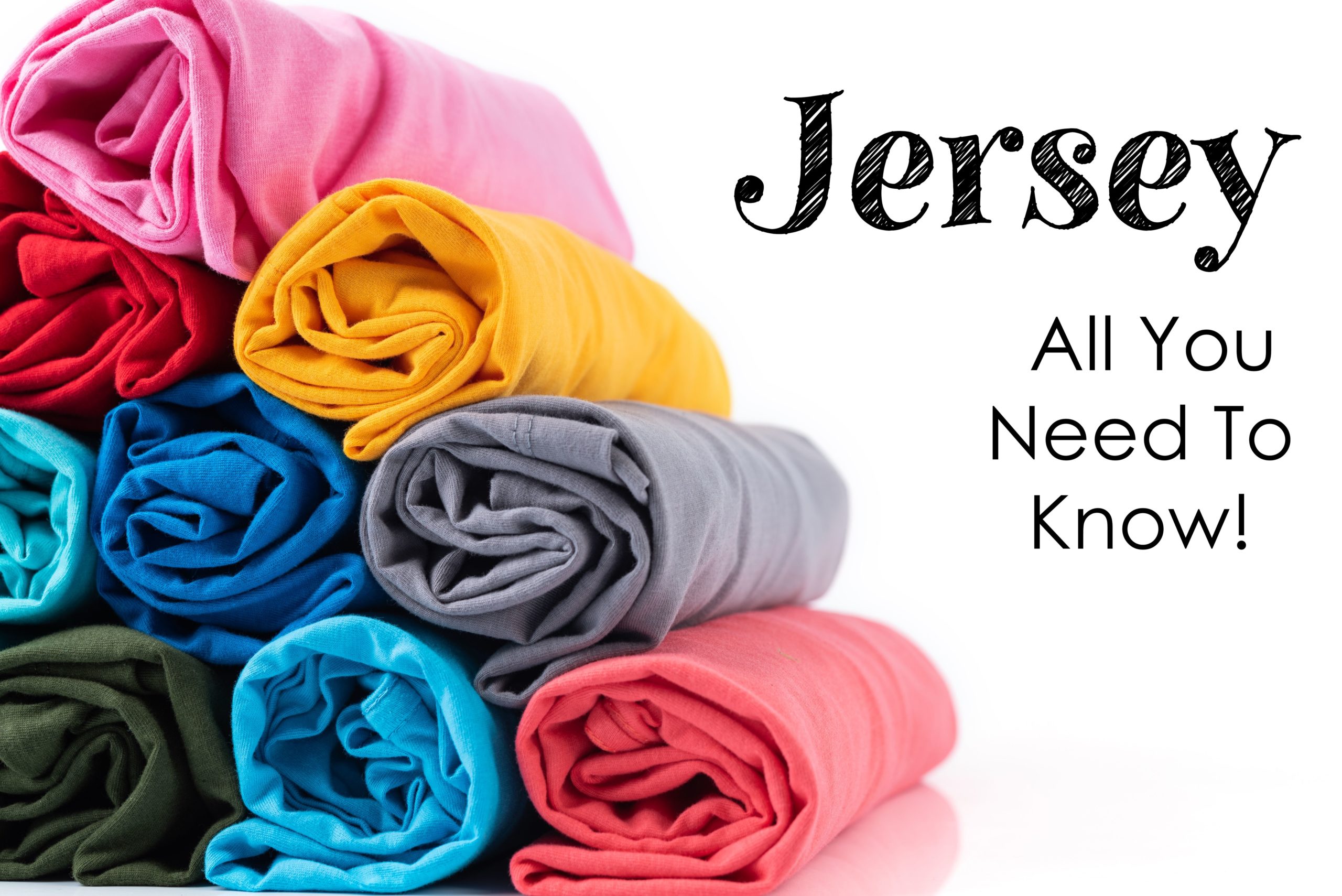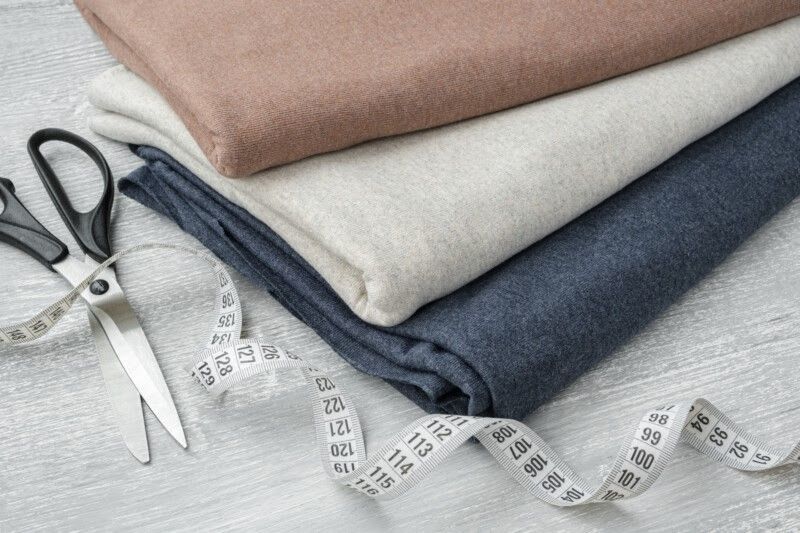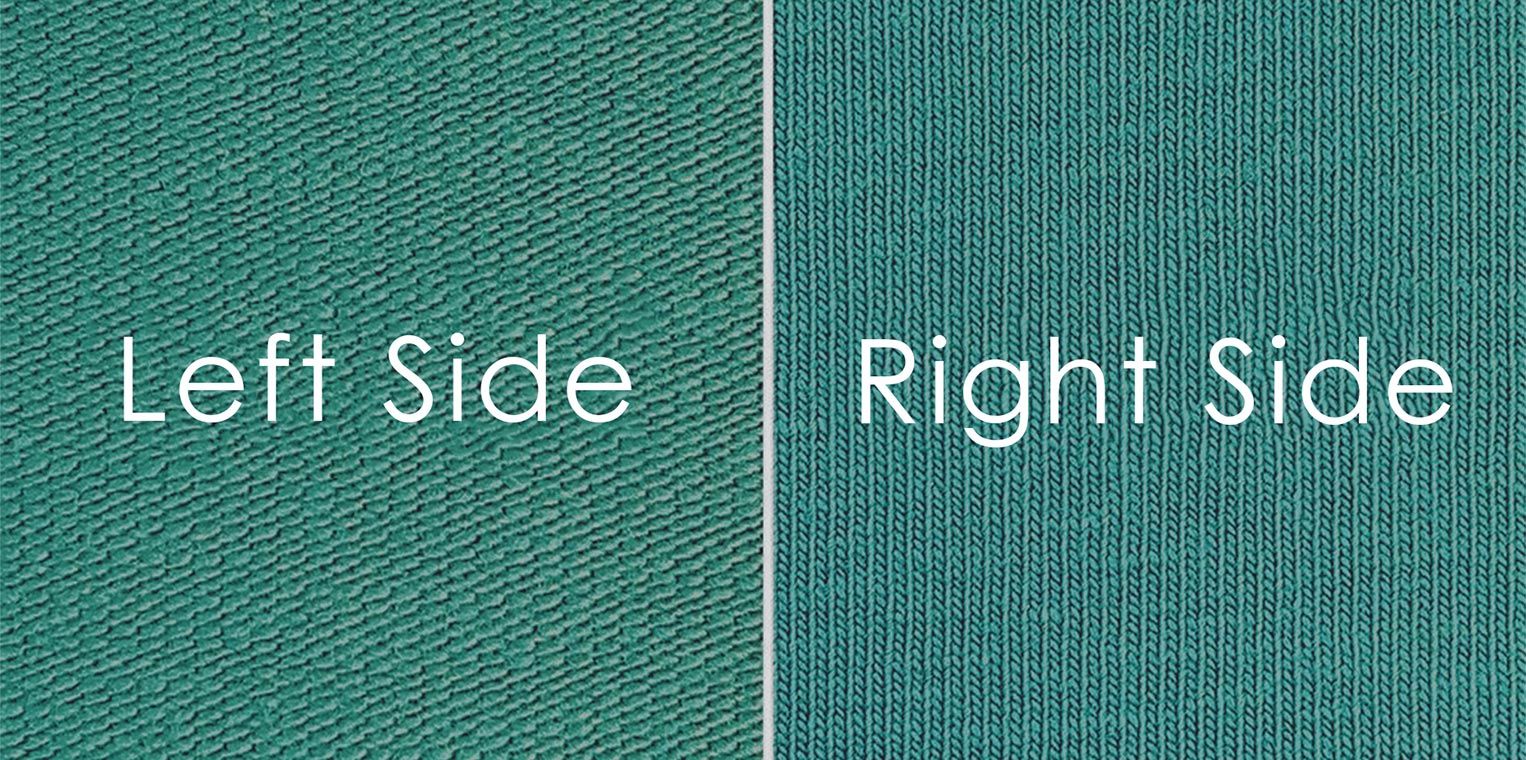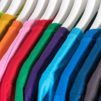Jersey Fabrics- all you need to know!

We all ‘ve heard of the word jersey & seen it on various clothing labels. It is the most used knit fabric.
Do you know the reason why?
Jersey is an amazing & versatile fabric that is used in various garments but sewing with knits can be pretty hard.
Let’s unveil some knowledge and useful tips about jersey material so that we all can understand what makes it so popular among other materials.
Also, check out our post ’14 Tips for easier sewing with Jersey’ where you can find some useful information related to ways of sewing jerseys in a more manageable way.

The History of Jersey
The name Jersey is believed to be derived from the British Channel Island of Jersey, which has been known for its knitwear and wool products since the Middle Ages. In the 19th century, the Victorian beauty and society lady Lillie Langtry contributed to the popularity of these export hits in her homeland with her then very trendy fashion style. Coco Chanel later made the material well known with her collections and so the fabric began its triumphal march in the world of fashion and sewing.
But it gets really complicated when you know that there are many different jerseys that get their name from the manufacturing method on the one hand and the material used on the other. One experiences total confusion when manufacturers use these terms interchangeably or when the same material bears several names. But let us try to shed some light on the darkness here.
Types and Manufacturing Methods of Jersey Fabrics
It’s worth taking a closer look at how a jersey is made. This alone results in many material differences that also determine the properties of the fabric. All jerseys belong to the so-called knitted fabrics, which are either knitted or warp-knitted. The difference is that when knitting a horizontal thread forms a row of stitches, while when knitting a vertical thread together with the adjacent thread forms what is known as a wale. Knitted fabrics can only be made by machine.

Single Jersey
The single jersey or tricot fabric is the most common type of jersey. It is made with one row of needles in a knitting machine and therefore has two sides for the left and right stitches. This makes the fabric stretchy, but unfortunately also sensitive to ladder stitches. Another typical feature that is particularly annoying for beginners is the rolling of the cut edges. Seams and hems should therefore always be secured well.
Double Jersey
The double jersey is usually a right-right knitted or warp-knitted jersey (although there are also left-left versions). This results in the same mesh structure on both sides, so it is the same on both sides. Only when you stretch it, the left stitches appear under the right ones. A typical example of a double jersey is the fine rib. This makes the fabric more robust and of higher quality than a single jersey.
Interlock Jersey
The interlock jersey knitted on two rows of needles is not very elastic. It also has two identical sides and a closed surface, which is created by basically connecting two layers together (interlock). The material is therefore very stable and can also be processed extremely well.
Jacquard Jersey
Jacquard is made with machines that give the fabric a structural pattern through different types of weave. The manufacturer can be very creative here and the jacquard jersey is therefore available in many great designs with interesting looks. The fabric looks very high quality and noble.
Cloqué Jersey
Another production method that leads to structures in the fabric is the cloqué jersey, in which two different layers are knitted together. The special look is created by the fact that the bottom fabric is very tight, and the top fabric is rather loosely stretched. Due to the yarn used, the lower layer contracts and throws up the upper layer like bubbles. The result is such a beautiful, noble effect.
Materials Used for Jersey
If the different manufacturing methods weren’t complicated enough for you, you can now be happy that there are quite a few materials from which jersey is made. The production method and material composition result in countless possibilities. In the trade, the fabrics are often sold with the material name. A cotton jersey can therefore be a single jersey or a double jersey. The best way to find out more is before buying.
Cotton Jersey or Stretch-Jersey
The most frequently used term cotton jersey usually describes single jerseys that are made of cotton, but 3-5% elastane has been added. The fabrics are particularly elastic and are therefore rarely sold as stretch jerseys. These fabrics make up most of the assortment in fabric stores and if you buy printed children’s fabrics, for example, the chances are high that it is a jersey of this type.
Used for: children clothes, t-shirts, sweaters, sportswear, everyday wear
Pure Cotton Jersey
Now it gets really complicated because, in addition to the cotton-elastane blends mentioned above, there is also a jersey made of pure cotton! The elasticity then comes exclusively through the binding. In order to distinguish them from the stretch jerseys that are also marketed as cotton jerseys, they are usually labeled with names such as “pure cotton jersey” or “100% cotton”. Cotton jerseys should be used to sew things that fall far, as the material bulges. One advantage is the suitability for allergy sufferers.
Used for: loose clothing, underwear
Viscose Jersey
Contrary to many rumors, viscose is not a pure synthetic fiber, but an industrially manufactured product made from natural cellulose. It is very similar to cotton, but it is a little heavier. Viscose jerseys usually contain elastane as well as viscose.
Used for: light dresses, nicely draped shirts and tops, feminine clothing
Romanite Jersey / Punto di Roma
This substance has many names and thus also contributes to confusion. In principle, the Romanit Jersey is an interlock jersey made from a mixture of viscose, polyester, and elastane. This gives it some great properties.
Used for: adult fashion, dresses, pants, shirts
Wool Jersey
Wool jersey is the most original of the jerseys, as they were the first export hits on the island of Jersey made of pure new wool. In the meantime, wool-acrylic mixtures are also selling as wool jerseys, but their properties are quite similar. The fabric is very warm.
Used for: baby rompers, children’s underwear, generally warm clothing
Functional Jersey
This type of jersey is made from synthetic fibers (nylon, polyester) and therefore dries very quickly. Otherwise, it is very elastic and has the same figure-hugging properties as a stretch jersey. One disadvantage is that sweat particles build up on the fibers. So you should wash it more often.
Used for: sportswear, leggings, tops
Foil Jersey
Finally, the foil jerseys should not be missing in this collection. These fabrics are mainly used for costumes for Carnival or Halloween. They consist of synthetic fiber foils on a carrier layer and often have very shimmering surfaces, scale patterns, or imitation sequins.
Used for: carnival costumes, party fashion
Which jersey is the right one for me?
There is no general answer to the question because, as just explained, there is a large variety of jersey fabrics. However, it is worthwhile to get to know the materials and then decide which one to use. Some areas of application arise solely from the properties of the material. We have therefore included corresponding suggestions in the article. In addition, you can also design many crossover projects with different fabrics. Be curious, get to know the jerseys, and take advantage of the variety they offer you.
If you’ve got the desire to work with jersey fabrics, be sure to check it out in our lovingly compiled assortment of cotton jersey, Viscose jerseys, or jacquards.
Also, don’t forget to check out our blog post ’14 tips for easier sewing with jersey’






